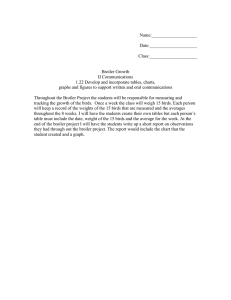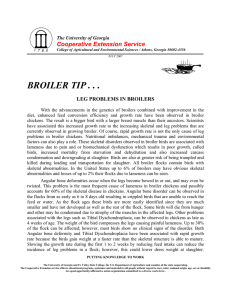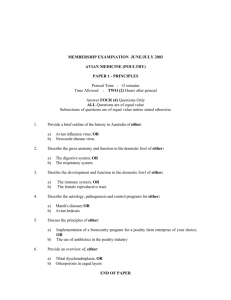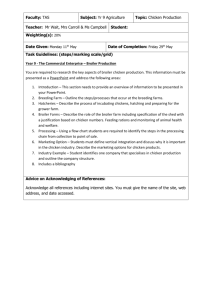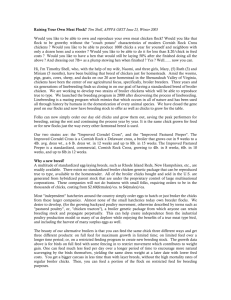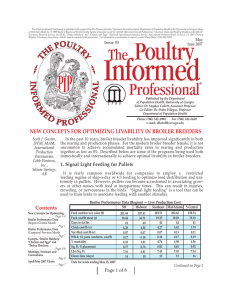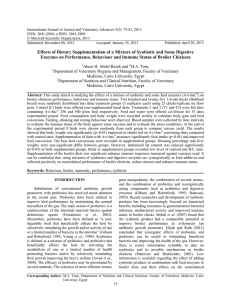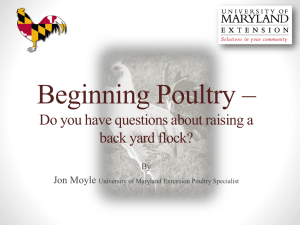An Example of Commodity Chains: Poultry in the United States
advertisement
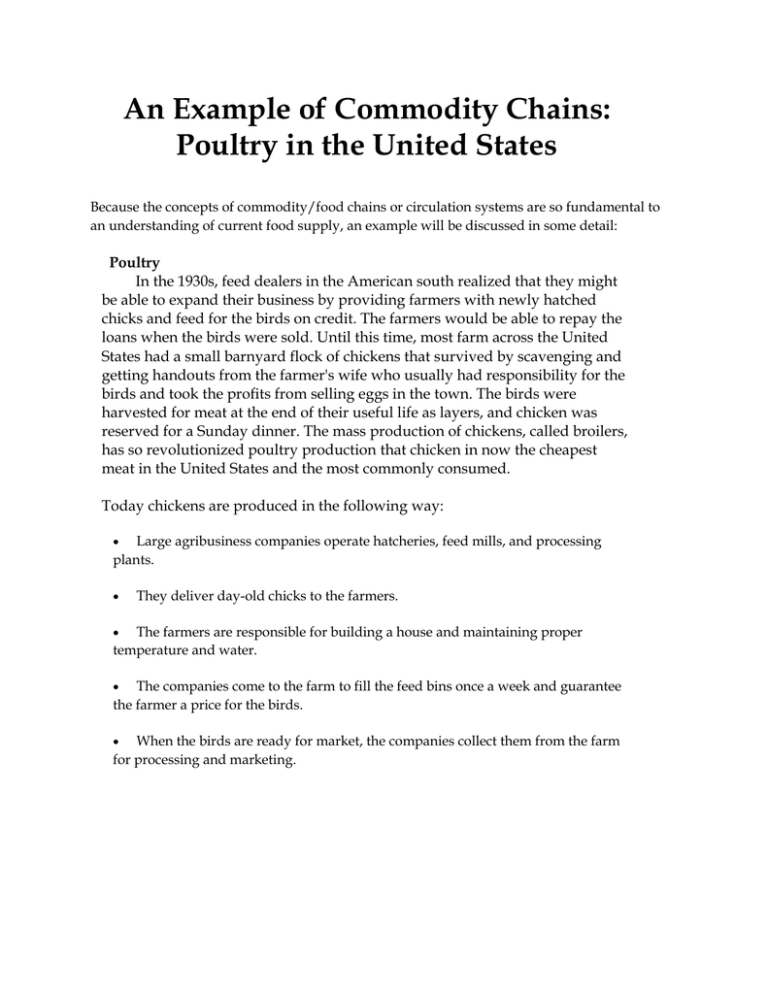
An Example of Commodity Chains: Poultry in the United States Because the concepts of commodity/food chains or circulation systems are so fundamental to an understanding of current food supply, an example will be discussed in some detail: Poultry In the 1930s, feed dealers in the American south realized that they might be able to expand their business by providing farmers with newly hatched chicks and feed for the birds on credit. The farmers would be able to repay the loans when the birds were sold. Until this time, most farm across the United States had a small barnyard flock of chickens that survived by scavenging and getting handouts from the farmer's wife who usually had responsibility for the birds and took the profits from selling eggs in the town. The birds were harvested for meat at the end of their useful life as layers, and chicken was reserved for a Sunday dinner. The mass production of chickens, called broilers, has so revolutionized poultry production that chicken in now the cheapest meat in the United States and the most commonly consumed. Today chickens are produced in the following way: Large agribusiness companies operate hatcheries, feed mills, and processing plants. They deliver day-old chicks to the farmers. The farmers are responsible for building a house and maintaining proper temperature and water. The companies come to the farm to fill the feed bins once a week and guarantee the farmer a price for the birds. When the birds are ready for market, the companies collect them from the farm for processing and marketing. Most of the nation's poultry supply is handled by a half-dozen large corporations that control the process from chicks on farms to chicken pieces in stores. Over the years, selected breeding has produced a very efficient chicken. In 1940, it took about 17 pounds of feed and about 15 weeks to produce a four-pound broiler. Forty years later, it took only eight pounds of feed and 7 to 8 weeks to produce the same size bird. In that same forty years, the size of the operations increased dramatically. Broiler houses that contained 1,500 birds were considered large in 1940, but now, contemporary broiler houses hold 20,000 birds or more. In addition, mechanization of water and feeding operations has reduced labor requirements from about 250 hours per thousand birds in 1940 to fewer than 25 hours today. Broiler production is an attractive option for small farmers because it requires only a few hours of labor a day, which allows time for off-farm employment. Broiler production is concentrated in intensely specialized areas that are widely scattered. The modern broiler industry developed on the eastern seaboard before World War II. It then grew rapidly in northeastern Georgia and northwestern Arkansas immediately after the War. Subsequently, concentrations developed in central Mississippi , northeastern and northwestern Georgia , the Piedmont areas of North Carolina , and the Shenandoah Valley area of Virginia . Many people believe that the broiler production process is manufacturing and not farming, because it is not directly connected to the land. The areas that produce large numbers of chickens are districts that are feed deficient. That is, the feed that is consumed by the birds has to be shipped in, primarily from the Midwest . The long, low one-story broiler houses are essentially factories that use birds as machines to convert the raw materials corn and soy beans into a finished product — meat for human consumption. Chickens are also efficient producers of manure, and one of the major issues of broiler production has been the disposal of the manure. While ideally it should be returned to the land because it's excellent fertilizer, manure is fed back to animals. The manure is rich in protein, and after it has been dried and flavored with molasses, it looks like soy bean meal and can be fed to either chickens or cattle. Questions: All answers must be put in your own words (paraphrased), not simply copied (plagiarized). 1. How are chickens produced today as compared to the past? 2. How many pounds of feed and how many weeks did it take to produce a four-pound broiler in 1940? In 1980? 3. How and why is the chicken manure fed back to them? 4. Create a flow chart and use pictures to show the commodity chain of chicken production in the United States.
